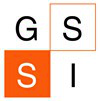Universal dynamics for the logarithmic Schrödinger equation
Rémi Carles
CNRS & Université de Rennes 1
We consider the nonlinear Schrödinger equation with a logarithmic nonlinearity, whose sign is such that no non-trivial stationary solution exists. Explicit computations show that in the case of Gaussian initial data, the presence of the nonlinearity a ects the large time behaviour of the solution, on at least three aspects. The dispersion is faster than usual by a logarithmic factor in time. The positive Sobolev norms of the solution grow logarithmically in time. Finally, after rescaling in space by the dispersion rate, the modulus of the solution converges to a universal Gaussian profile (whose variance is independent of the initial variance). In the case of general initial data, we show that these properties remain, up to weakening the third point (weak convergence instead of strong convergence).
In the first lecture, we present the model, some of its properties, and state the main results. In the second lecture, we analyze in details the Cauchy problem, and explicit computations in the Gaussian case. In the final lecture, we prove the main result.
Bosonic mean-field limits and the quantum de Finetti theorem
Nicolas Rougerie
CNRS & Université Grenoble-Alpes
We shall be concerned with the mean- field approximation for equilibrium states of N-body systems in statistical mechanics, i.e. the justification of effective models based on statistical independence assumptions. In particular we want to rigorously derive Hartree and/or Gross-Pitaevskii equations used to model Bose-Einstein condensates. Our main tool is a structure result going under de name of "quantum de Finetti theorem", describing the large N limits of admissible states for these systems. This relies on the symmetry under exchange of particles, due to their indiscernability. Thus we approach the mean- field approximation using as little information on the specifics of the Hamiltonian at hand as possible.
Lecture notes for (a very extended version of) the course may be found at https://arxiv.org/abs/1506.05263, or (book in french, the pdf may be downloaded for free) https://spartacus-idh.com/978-2-36693-012-2.html.
Kinetic Equations describing Wave Turbulence
Juan J. L. Velázquez
University of Bonn
In this series of lectures I will describe some mathematical results for a kinetic equation which is known as the equation for Wave Turbulence or Weak Turbulence. This equation describes the transfer of energy between different frequencies in many wave systems, like the water waves of the ocean, nonlinear optics and others. From the mathematical point of view the Wave Turbulence equation has some analogies with the classical Boltzmann equation, but a major difference is that the collision terms are described by means of cubic instead of quadratic terms. This is due to the fact that the collisions involve three instead of two particles.
Wave Turbulence equations admit in many cases power law solutions which describe the transfer of energy from large to small wavelengths in a manner that resembles the transfer of energy in the classical theory of turbulence in fluid mechanics. Another relevant feature of the WaveTurbulence kinetic equation is that it might yield blow-up in finite time in the sense that bounded initial data might become unbounded in finite time. In spite of that, it is possible to define global solutions in the sense of measures. The blow-up can then be interpreted as the onset of a coherent wave oscillating with a single frequency which contains a positive fraction of the total number of waves of the system. This coherent wave is usually referred in several applications as a condensate.
In these lectures the specific kinetic equation arising in the statistical description of the waves given by the Nonlinear Schrödinger equations will be considered. The well-posedness properties of the resulting kinetic equation, as well as its associated power law solutions describing energy fluxes, blow-up in finite time and the onset of condensates will be presented.

